So, you were recently driving on a Texas highway or street when a driver of a large semi-truck lost control of his vehicle (probably because he wasn’t paying attention) and collided into your vehicle. You have seen it before, aggressive and careless truckers with little regard for their smaller roadway brethren speeding along causing havoc, but you never thought that you would be a victim. The feeling of anger, uncertainty, and pain is likely overwhelming. What are your options? Where do you start? Who will pay for your medical bills and property damage? The last thing you want to worry about when you have sustained serious bodily injuries is to have to search for Dallas truck accident attorneys to handle your case.
Well, you have come to the right place. You are about to learn all of it. This free article is a crash course (no pun intended) for injury victims who have recently got into an accident with a commercial truck on a Texas roadway.
By the end of the article, you are going to learn about:
- The various stages of the personal injury claims process;
- Factors insurance adjusters use to determine the monetary value of injury claims;
- The Do’s and Don’ts subsequent to getting into a vehicle collision.
How many truck crashes happen each year in Texas?
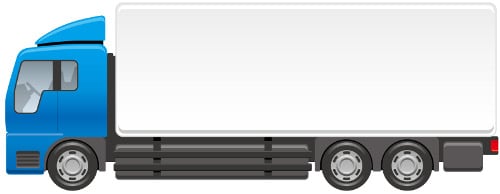
According to the Texas Department of Transportation for the 2017 calendar year, 35,635 total crashes took place involving commercial motor vehicles throughout the state. Dallas County had the second most amount of collisions involving commercial vehicles in the entirety of the state at 3,707 behind Harris county at 5,876 crashes. Dallas County was followed by Bexar county at 2,659 crashes, and Tarrant at 2,198. It can be safe to assume that a large number percentage of those commercial vehicles involved commercial “trucks.” Dallas County also ranked second place behind Harris county in terms of fatalities caused by crashes at 35. It also ranked second place behind only Harris for “suspected serious crashes” and “suspected serious injuries” at 79 and 98 incidents respectively.
Statewide, trucks, truck-tractors/semi-trailers (excluding pickups) made up 559 of the 4,597 total vehicles involved in fatal crashes, or approximately 12%. With respect to vehicles involving “suspected serious injury injur[ies]” trucks, truck-tractors/semi-trailers (excludes pickup trucks) made up 1,464 of the 25,139 total vehicles involved in crashes or approximately 6% of the vehicles. The high frequency of truck accidents in Dallas County can be a testament to the regions booming industrial economy but also can be the product of other contributing factors including but not limited to: lack of enforcement of speed limits, and other laws due to police budget cutbacks, distracted driving, city planning issues ensuring that dangerous intersections and other streets are appropriately patrolled and safeguards (such as speed bumps, lower speed limits, etc.) are implemented to reduce crashes.
What kind of truck accident was I just in?
Accident victims may often find themselves at a loss for words when it comes to describing how a traffic collision took place. The following terminology may help an individual describe to his or her injury attorney exactly what happened.
Jackknife:
Jackknifing refers to the folding of a semi-truck and trailer during a crash so that it bears a resemblance to the ninety-degree folding of a pocketknife. It often is caused by improper breaking, poor road conditions such as icy surfaces, or equipment malfunction. When a semi jackknifes it skids and the trailer pushes the tractor from behind until it spins it around and causes it to face backward. These collisions are extremely dangerous because of the violent swinging that takes place thereby crushing anything in their path. In 2017 the Federal Motor Carrier Safety Administration (FMCSA) did a Large Truck Causation Study which analyzed 141,000 serious truck accidents, with a large number of them resulting in serious injuries or fatalities. Of the total crashes that were analyzed 7,000 or (5%) were caused by jackknifes. These accidents are often fatal both to the driver of the cab as well as other drivers on the road and it’s important to avoid them at all costs.
Rollover:
Rollovers happen at high speeds when a truck driver is forced (usually because of an object in the road, or poor road condition, or driver error) to quickly change direction or lanes resulting in the trailer and also the cab of the truck to tip over on its side. It is the result of centrifugal forces causing the truck to lean away from a curve when the truck is traveling at high speeds, has an imbalanced load, or is traveling around a tight curve at too excessive a speed. Typical passenger vehicles such as four-door sedans do not encounter the same issues as often because they have lower centers of gravity, although some sports utility vehicles and jeeps do.
Tire Blowout:
If you have driven on a North Texas highway, you most likely have encountered shredded tire debris on the side of the roadway. You may not have realized it but most of those shredded tires you see are actually from large commercial trucks. The FMCSA study cited above found that 8,000 accidents of the 141,000 studied were the result of tire problems. In most cases, tire blowouts occur because of: driver error (negligence), improperly installed tires, inadequate vehicle inspections, overloaded trucks, or defective manufacturing. Trucking companies have a legal duty to ensure that they operate their trucking fleet in a safe manner. Often this includes doing necessary inspections of tires per State and Federal law.
Wide Turn:
Large commercials trucks such as 18 wheelers can be very difficult to maneuver, especially in densely populated cities. Wide turns often require a driver to enter into an occupy an additional lane in order to make a turn. If the driver loses attention or does not properly check both sides, or fails to maintain a safe speed, the truck or trailer can often times tip over, turn into oncoming traffic or crush a smaller vehicle occupying a side lane. Left-hand turns are especially tricky and constitute the majority of accidents caused by wide turns. In order to do a left turn, a driver must swing the truck further to the right before turning to ensure sufficient clearance exists. In fact, large companies such as the United Parcel Service (UPS) as a matter of policy instruct their drivers to avoid left-hand turns at all costs due to the risk involved.
Blind Spot:
Blind Spot or “No-Zone” accidents have been so dangerous and so prevalent that through the years the FMCSA has made multiple attempts through public campaigns to bring awareness to the issue in order to reduce the number of Blind Spot accidents. Big commercial vehicles such as tractor-trailers and buses have large blind spots on all four sides of the vehicle due to the length of the vehicle, and when other vehicles attempt to pass them in other lanes truck drivers often have no idea that a vehicle is in the blind spot. If the passing vehicle does not leave sufficient distance between itself and the truck, and the truck decides to change lanes, it can often lead to a gruesome and traumatic sideswipe collision taking place where passenger vehicles are crushed. If you can’t see the drivers face in the truck’s side mirror, the driver can’t see you either.
Rear-end Collision:
These are the most common type of trucking crashes and frequently happen when a driver is not maintaining a safe distance with the vehicle ahead of him given the vehicle’s speed (probably as a result of a distraction or fatigue), and the vehicle ahead comes to an abrupt stop. The truck does not have sufficient time to stop. As a result of the tailgating, the front of the truck collides with the rear of the car that is ahead causing substantial property damage and most often whiplash. This can really happen anywhere, at an intersection with stop signs, at a red light, in a construction zone, in traffic on the freeway such as a congested onramp. Commercial trucks must maintain safe distances to account for emergency stops on the freeway. By way of example a 65-foot long semi going 65 miles per hour with an 80,000 lbs. gross weight will take 525 to stop or approximately two football fields (in ideal road conditions).
Override & Underride:
Override collisions typically happen in a rear end scenario. In an override crash, the truck driver is unable to slow or stop his vehicle causing the cab of the truck to run over the back of a smaller vehicle in front. These crashes happen often in the following scenarios: truck driver tailgating another vehicle too closely, poor visibility of vehicles ahead due to rain, snow, or fog, driver distracted and failing to yield to traffic, trucker failing to maintain a safe speed, tire blowouts, brake failures, passenger vehicles ahead cutting off the trucker. Underride collisions meanwhile involve a passenger car rear-ending a tractor-trailer, with the passenger vehicle riding under the trailer. The passenger vehicle is often literally crushed and essentially stuck in the underside of the semi. These types of crashes are plain nasty and are often caused by the following events: truck ahead does not have working brake or tail lights, trucker changes lanes without signaling, required reflective tape missing on trailer or is nonfunctional due to dirt or other debris, necessary underride guards absent on trailer ahead, truck parks on shoulder without emergency lights flashing, truck backs up without first checking for presence of other vehicles.
Lost Load:
Lost load accidents involve unsecured cargo that detaches from the truck and makes it way onto the freeway and causing catastrophic injuries. It can involve a small object flying off a truck (like a crate or pallet) ahead or an entire trailer that detaches from its cab and crushes a car that crashes into it head on. The collision that follows can be violently fatal depending on the circumstances.
Head On Collision:
Head on collisions are well known to cause major property damage and devastating injuries due to the very nature of two vehicles with massive size differential colliding against each other from opposite directions. They happen mostly in two circumstances, 1.) when a vehicle crosses the median on a roadway and goes opposite of ongoing traffic, and 2.) when a driver goes the wrong way against traffic either on a one-way street or highway. This actually happens quite a bit because commercial trucks often attempt to pass other vehicles on rural two-lane freeways.
T-bone:
a T-Bone accident is a side impact collision that frequently happens in the middle of an intersection when one vehicle broadsides another on the side forming what would appear to be a “T” when viewed from an aerial camera. Accident victims are extremely vulnerable when these crashes take place because of the lack of a bumper and additional steel that typically provides a form of padding in rear-end accidents. Literally, the only thing standing in the way of a passenger or driver from the other vehicle is a window and a door. These accidents can happen if one party runs a red light or stop sign. Proving fault or liability can be tough and is often dependent on witnesses, surveillance or other camera footage, and other evidence collected at the scene.
What type of truck hit me?
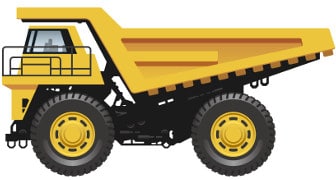
Dump Trucks:
These are trucks that are used to transport loads of loose material such as dirt or gravel. They can be typically found on constructions sites to haul away demolition or bring in the material. These trucks are equipped with hydraulics that lift and tilt the front side of the bed closest to the cab so that the materials can literally be dumped or delivered on the ground from the backside of the truck. Due to the open bed nature of the trucks, they can be dangerous if loaded the materials within the bed have not been properly secured. They can also cause serious crashes due to their length and weight and difficulty in maneuvering.
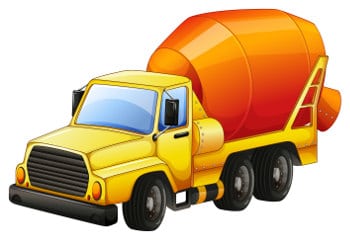
Concrete Truck Mixers:
These are commercial trucks that have portable concrete or cement mixers mount on the back of the chassis of the truck meant for delivering concrete to construction sites. The mounted mixers combine cement, sand, gravel, and water which form concrete. These trucks typically weight twenty thousand to thirty thousand pounds and can carry 40,000 pounds of concrete.

Tractor-Trailers (semi):
This is what often comes to mind when someone thinks of a commercial truck. This freight transportation vehicle consists of a cab that pulls a semitrailer without a front axle. They transport goods and heavy cargo nationwide. A classic example of a tractor-trailer truck is an 18-wheeler or big rig. According to the Department of Transportation, there are over two million tractor-trailers operating in America. These trucks also transport refrigerated goods such as produce. They are essential to a healthy economy but when a wreck happens due to operator error it is often devastating.
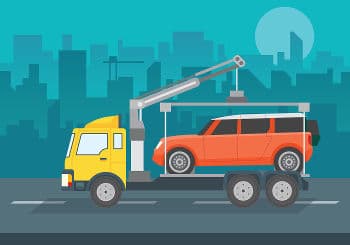
Flatbed:
Flatbed trucks, you guessed it, are trucks that pull flatbed trailers. Since the trailers are entirely flat and are not contained with a roof or walls so they can be loaded from all angles. This allows for simple and fast loading of goods. The drawback is that they cannot be loaded with goods that are vulnerable to moisture or rain, which is not the case with closed body trucks. Although their use has been in decline for years due to their limited applicability, you do often see them used in connection to construction, either to transport machinery or materials such as roofing or lumber.

Tanker Trucks:
These are trucks that haul a cylindrical tank that carries liquefied loads, or gasses on roadways. These loads include but are not limited to: industrial chemicals, gasoline, diesel, water, juices, milk, wine, and other goods. These trucks have capacities that vary from 5,500 to 11,600 gallons. Some are insulated others are not, some are pressurized but many are not. You will see them most often transporting gasoline or natural gas. As you can imagine they are extremely dangerous due to the explosive and volatile loads. They are also very difficult to maneuver because they have a high center of gravity, are extremely long and heavy.

Tow Trucks:
These are trucks with special equipment that are used to move stationary vehicles that are illegally parked, disabled, or impounded. Often they are used to move salvaged vehicles at the site of a collision to a repair or body shop. Vehicle is a massive 7 billion dollar a year industry in America, and thousands of tow trucks can be found on Texas roadways at any given time.
What are common injuries caused by trucking accidents?
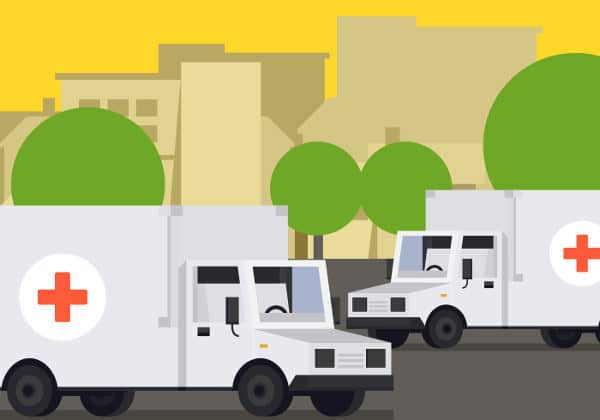
A whole range of injuries are caused by truck crashes, the most common include (in no particular order):
Torn Rotator Cuffs and Shoulder Injuries:
These are extremely painful injuries that substantially limit or impair a person’s range of motion and prevent them from accomplishing everyday tasks that most people take for granted. Torn rotator cuffs are the most common shoulder seat belt injuries that occur as a result of a collision.
Head and Brain Injuries:
Concussions are by far some of the most common head injuries that are sustained during a crash. Head injuries, however, can range from closed head to penetrating. The long-term effects of brain damage and pain can be debilitating and severely restrict an injured victim’s major life activities.
Broken Bones:
The stress, pressure, and sheer crushing impact of centripetal forces of two vehicles colliding with a substantial weight disparity are the reasons broken bones and fractures are common byproducts of high-speed commercial vehicle crashes. These types of injuries require casts and virtually assure long downtimes for recovery as the bones have to fuse together, which can be a lengthy process. The most common broken bones include: tibia/fibula fractures, femur fractures, rib fractures, hip fractures, pelvic fractures, facial/skull fractures, wrist fractures, clavicle fractures, and arm fractures.
Cuts & Scrapes:
Lacerations are a medical term for cuts or tears in the skin or flesh. They can be dangerous depending on their severity, and depending on the likelihood that an injured individual’s wound can be infected. Cuts can also lead to permanent scars and long term disfigurement that can also impact a victim’s quality of life. They are often the result of exposure to sharp broken glass or metal objects. Medical providers remedy lacerations with staples, stitches, skin glue, or tape. Victims with severe scars also frequently seek scar revision surgery from a plastic surgeon to address aesthetic issues that may have arisen post-accident.
Broken Ribs:
Broken or fractured ribs are usually the product impact to the chest area from a heavy object during a car crash. They can happen when a driver’s ribs strike the steering wheel, when a passenger hits the dashboard, or when a seatbelt holds the chest back while the sheer force of the crash pulls the rest of the body forward. Broken ribs can significantly limit a person’s breathing, and cause unbearable pain.
Spinal Cord Injuries:
Spinal cord injuries resulting truck accidents are too common and are caused by fractures of the the vertebrae subsequent to impact. These types of injuries can caused long term disability that can permanently hamper a crash victim’s quality of life. Pain can often be delayed, and damage is not always apparent right off the bat because x-rays can miss these types of injuries while more expensive MRIs will.
Wrongful Death:
Due to the very big size and weight disparity with passenger vehicles, truck wrecks often can be fatal. When a death happens as a result of a crash the emotional toll and financial burdens on a victim’s family are immeasurable. No amount of financial compensation can help overcome to the trauma that such a life event has on a family.
Who is responsible for my injuries?
It may be obvious to most that a driver of a truck that caused an accident is responsible for damages to injury victims, but there are many other less obvious potential liable parties as well that have to be considered. Typically, if an employee of a company during the course and scope of employment commits an act of negligence the company can also be liable for the act. This, in legal terms, is called “respondeat superior” or let the master answer/respond. In addition, the FMCSA and the Department of Transportation have promulgated various federal regulations regarding the inspection, repair, and maintenance of commercial trucks that companies must abide by. Violations of these regulations can provide an added avenue of liability for the company and evidence of wrongdoing that can be used against the company in a potential civil lawsuit. An even less apparent potentially liable party that can provide an additional pocket to pay for damages to an injury victim may be the shipper or loader of the freight. This may be the case if the shipped goods were negligently loaded by the company and caused or contributed to the crash. Other parties such as manufacturers of vehicles, parts, breaks, tires, etc. can also be held liable for manufacturing defects that may have caused the collision.
What types of damages are recoverable?
Damages are split into general damages and special damages. General damages are damages that must be paid by a Defendant where there isn’t an exact dollar value that can be calculated for the loss, it is not truly quantifiable. This includes pain and suffering, loss of consortium, physical disfigurement, emotional harm/mental anguish, etc. and it is awarded to personal injury victims as compensatory damages to cover their losses. Special damages or pecuniary loss, on the other hand, are quantifiable, you can precisely calculate them. They are awarded against Truckers and Truck companies and are awarded to injured victims. They cover losses that as essentially future and past out of pocket expenses that a victim is expected to/will incur as a result of the accident. They include repair or replacement of damaged property (vehicles, etc), lost wages and future lost earning capacity, medical expenses (both past and future due to the injury/disability sustained as a result of the wreck).
What should I do after getting into a truck wreck?
- Call the police and try to obtain a police report. They will typically come to the accident scene, interview witnesses, take pictures, and investigate the accident. This will be very helpful later down the road during the claims process;
- If possible, take pictures of the accident, vehicles, damage, etc. Don’t forget to take extensive pictures of the injuries you have sustained. Photographs of all body parts showing injuries sustained (including burns, cuts, scars, etc.) will be necessary before the healing process commences and the evidence is lost forever. This is especially the case before cosmetic surgery is scheduled. Pictures should also be taken after any surgical procedures. A medical photographer should be retained so that the photographs adequately capture the magnitude of the harm and pain;
- If police are not present obtain names and telephone numbers of witnesses, if they refuse to provide you the information at least try to obtain the license plate numbers of their cars so they can be identified at a later time;
- Do not discuss the incident with the other party, and especially not the other party’s insurance company/investigator. Sometimes claimants do or say things that can irreparably damage their case. Avoid discussing any facts. Remember that anything you say or do can later be used against you as the case unfolds;
- If you are injured, seek medical advice immediately. Actually, follow the doctor’s advice. Failing to obtain medical care can also harm your position as the other party will attempt to blame you for failing to mitigate your damages by obtaining and following proper medical care and advice;
- Your memory may fade with the passage of time. Therefore, you should consider memorializing the sequence of events (including the chronology) in writing. This includes the description of the accident, the description of the injuries, names of witnesses, the identity of potential defendants and of potential witnesses, the identity of all health care providers, etc. Warning: be as exact and precise as possible because under the 1999 amendment to the Texas Rules of Civil Procedure (Tex. R. Civ. P. 192.3(h) the written notes you make may be obtainable by way of discovery by the insurance company/defendant at a later time.
- Take affirmative and precautionary steps to preserve essential evidence and make sure it is not lost, altered, or destroyed. If your car was totaled refrain from having it fixed until detailed pictures of the property damage and the vehicle itself have been taken. Attorneys typically hire professional photographers with experience with wrecks to take these pictures. If you have any go pro, or other camera footage preserve it. DO NOT TAMPER WITH ANY OF THE EVIDENCE.
How do lawyers charge for the services they provide?
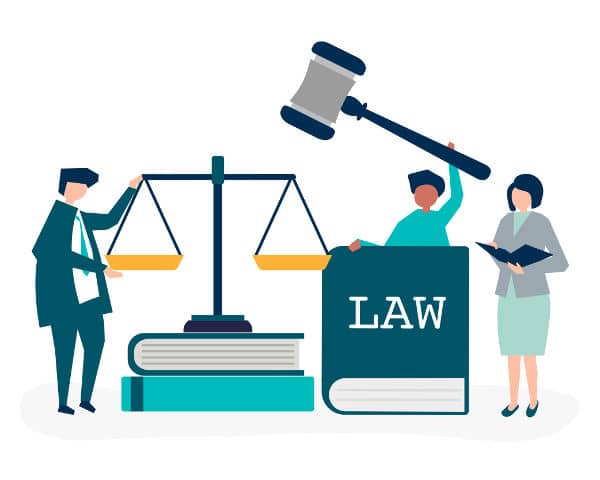
Truck accident attorneys in Dallas are typically paid on a contingency basis. If you win, you pay a fixed percentage of the award or settlement amount (typically between thirty-three to forty percent, although this amount is negotiable). If you don’t win, you don’t have to pay any attorney’s fees and the lawyer representing you takes the loss for the time he has spent on the case. This also means that you do not have to pay attorney fees upfront, and out-of-pocket costs such as court filing fees, process service fees, copy costs, expert witness fees, postage, investigator fees are all advanced by the attorney representing you. These expenses can be deducted off the top (before the calculation of attorney’s fees) or after, depending on the circumstances. Everything is negotiable between the attorney and the client.
What kind of documents, records, and information will my lawyer need?
During the initial meeting with an attorney you should bring in any documents evidencing the injuries sustained, documentation showing out of pocket expenses to date (car rental costs, towing charges, photographers costs, etc), property damage, and any information bearing on the accident itself. This includes but is not limited to medical records (medical and hospital reports, medical bills), repair estimates or bills, all insurance policies you may have (including automobile, homeowner’s, medical and/or disability insurance policies relevant to the accident, umbrella), recent copies of canceled paychecks and pay stubs (documentation of lost earnings to date), police reports or other official accident reports, photographs of the injuries and accident scene, names and addresses of adverse parties and their insurance carriers, names and addresses of witnesses, all physical evidence that is capable of being transported (i.e. torn clothing, damaged child safety seat, etc). If you are not in possession of any of the above documentation, no need to worry, your attorney can help you obtain them.